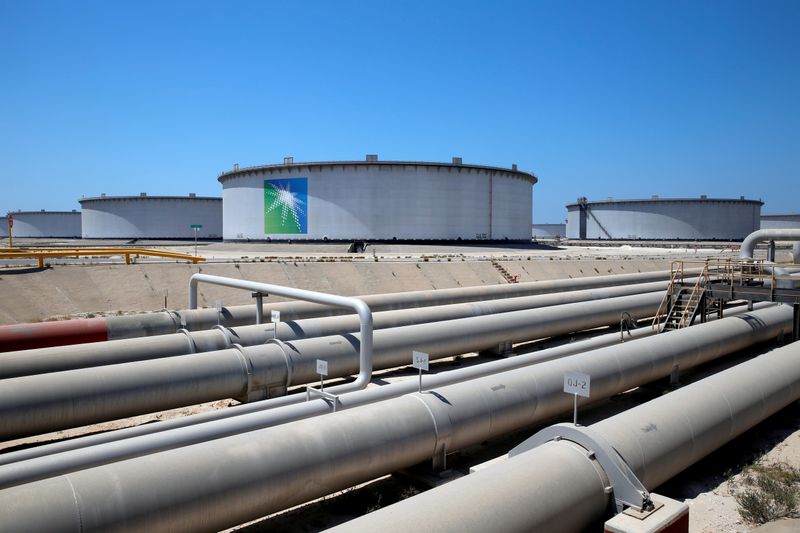By Stephanie Kelly
NEW YORK (Reuters) - Oil prices fell on Monday after Saudi Arabia's sharp cuts to crude contract prices for Asia revived concerns over the demand outlook.
Brent crude futures fell 39 cents to settle at $72.22 a barrel. U.S. West Texas Intermediate crude were last down 40 cents at $68.89 a barrel.
State oil group Saudi Aramco (SE:2222) notified customers in a statement on Sunday that it will cut October official selling prices (OSPs) for all crude grades sold to Asia, its biggest buying region, by at least $1 a barrel.
The price cuts were larger than expected, based on a Reuters poll of Asian refiners.
"When the Saudi giant cuts its selling prices to Asia for October, signaling it sees the supply-demand relationship slightly shifting, traders can't but follow down that path today," said Bjornar Tonhaugen, head of oil markets at Rystad Energy.
Global oil supplies are increasing as the Organization of the Petroleum Exporting Countries and its allies, a grouping known as OPEC+, are raising output by 400,000 barrels per day (bpd) each month between August and December.
"Given that OPEC+ is continuing its plan to raise production monthly, despite weak data from China and the U.S. raising slowdown fears and Saudi Arabia looking for market share in the region, oil is likely to remain under pressure," said Jeffrey Halley, senior market analyst for Asia Pacific at brokerage OANDA.
The earlier decline in crude futures added to falls on Friday after a weaker-than-expected U.S. jobs report indicated a patchy economic recovery that could mean slower fuel demand during a resurgent pandemic.
Losses were capped by concerns that U.S. supply would remain limited in the wake of Hurricane Ida.
The U.S. government is releasing crude from strategic petroleum reserves as production in the U.S. Gulf Coast struggles to recover.

About 1.5 million barrels per day of oil production in the Gulf of Mexico remain shut in after Hurricane Ida, the Bureau of Safety and Environmental Enforcement said on Monday. Another 1.8 billion cubic feet per day of natural gas output also was shut-in.
The hurricane also led U.S. energy companies to cut the number of oil and natural gas rigs operating for the first time in five weeks, data from Baker Hughes showed on Friday. The oil rig count last week fell the most since June 2020.